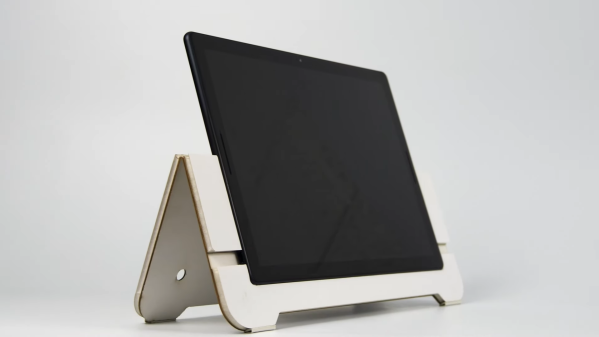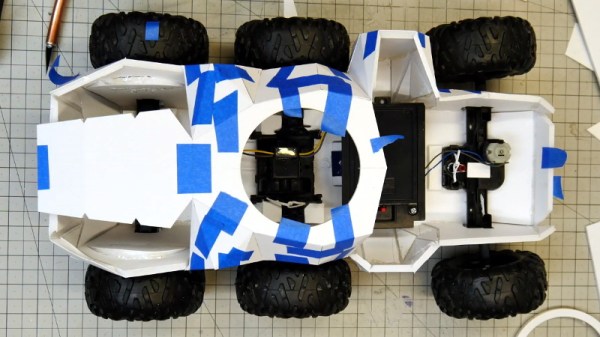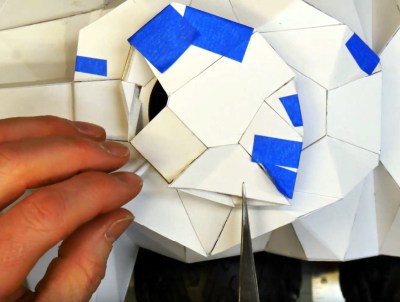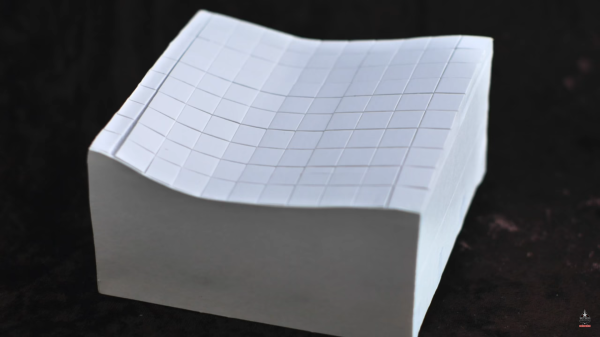We hadn’t considered how challenging it might be to try drawing long-term on a tablet, and it sounds as though Apple didn’t, either. According to [Eric Strebel], who normally designs products for other people, there are many problems to solve. The camera area creates a bump on an otherwise flat backside, so it wobbles on the table. It’s thick. It’s too easy to run your stylus off the side.
Yes there are tablet holders out there, even a few with cup holders, but almost none of them have a kickstand for holding the thing vertically. If you want something done right, you have to do it yourself. And so [Eric] designed his ideal stand to solve all of these problems (video, embedded below). It’s mostly made of laser-cut foam core board, with some layers of poster board added to make the bezel totally flush with the tablet.
[Eric] can snap the tablet in place and use it flat, or fold back the upper half into a stand. It even works well over on the couch, or sitting up in bed. We particularly like the window gasket feet and all the versions of his hinges, which start with strips of cheesecloth and end in grosgrain ribbon. [Eric]’s approach to design always reminds us to keep an open mind about materials and methods. If you try using what you already have, the results may surprise you. Check out the build video after the break.
Maybe you don’t need or want a tablet stand. How about a foam core spray booth?
















